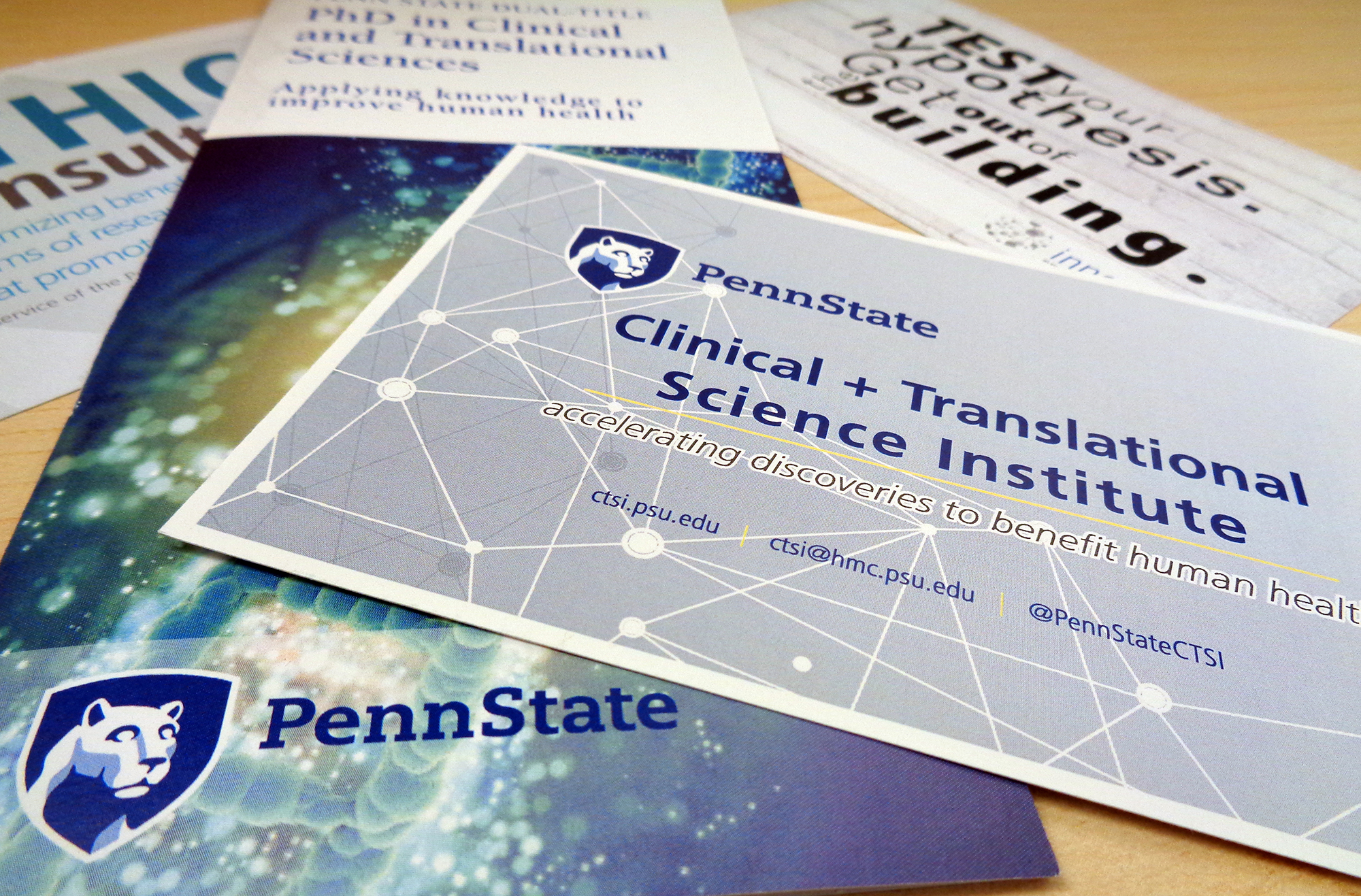Clinical research guidebook an example of strong collaboration

An extensive online guidebook has been created to help early-career to established Penn State researchers more easily navigate the clinical research process at Penn State College of Medicine and Penn State Health Milton S. Hershey Medical Center. The guidebook, a project sponsored by Penn State Clinical and Translational Science Institute, shows the benefit of the 62 institutions awarded Clinical and Translational Science Awards sharing best practices to advance medicine.
“Penn State Clinical and Translational Science Institute's mission is to accelerate discoveries to benefit human health,” said Dr. Lawrence Sinoway, institute director. “While that mission can involve highly technical assistance like advanced computing or data analysis expertise, it can be as simple as creating a resource that helps researchers find the answers or guidance they need quickly so that they can get back to answering their scientific questions through clinical research. Without clinical research, our findings in the laboratory can't be used practically to help patients in the exam rooms.”
The guidebook provides an overview of federal regulations and processes and procedures for conducting clinical research at Penn State College of Medicine or Hershey Medical Center. Elizabeth Galgocy, Office of Research Quality Assurance, was inspired to bring the guidebook to Penn State after attending a Clinical and Translational Science Award consortium event.
“Representatives from the 62 Clinical and Translational Science Award consortium sites shared tools used in their institutions that could enhance training programs and investigator education regarding research and Good Clinical Practice,” Galgocy said. “The University of California-Davis provided hard copies of their guidebook. It provided so much valuable information that I immediately thought it could be a useful tool for our campus.”
Galgocy brought the idea back to Sheila Vrana, PhD, associate dean for research and Dr. Neal Thomas, associate dean for clinical research at the College of Medicine.
“The research enterprise is always looking for ways to facilitate research and communicate best practices,” Vrana said. “The tool developed by the University of California-Davis CTSC was a ‘soup to nuts' compendium on the conduct of clinical research at their institution.”
University of California-Davis Clinical and Translational Science Center shared its guidebook, including editable files, with Penn State to use as a foundation. The College of Medicine's Office of Research Quality Assurance spearheaded assigning topics to content experts within the different research departments. The information was edited and site-specific information was added and updated as processes changed throughout the nearly two years it took to compile the guidebook. After most of the text was completed, Joan Concilio of the college's Web Solutions team was instrumental in providing additional guidance and web design.
“It took the efforts of many individuals with appropriate expertise to bring this project to fruition,” Vrana said. “It was spearheaded by Elizabeth Galgocy and Tamara Bubb from Research Quality Assurance, and its creation was featured in the renewal submission of Penn State Clinical and Translational Science Institute grant. It was a team effort that touched much of the organization and the result is an impressive and informative resource.”
The guidebook includes 14 main topics that guide an investigator through important first steps involved in clinical research such as training resources and trial development and additional information including obtaining necessary approvals and maintenance of a trial through implementation to closure stages. While the guidebook is specific to the College of Medicine campus, researchers across Penn State can benefit from more general sections, including a section on Clinical and Translational Science Institute resources. It is also a resource for investigators from other campuses to see the processes for collaborating at the College of Medicine campus. The project files are available to be used by other Penn State campuses to reflect their specific processes.
“While the guidebook is not meant to be all-inclusive, it provides researchers with a road map to navigate the often complex processes and procedures encountered when conducting clinical research,” Galgocy said. “The guidebook is a great resource to provide summary and contact information within the institution. Direct-access links are provided to obtain additional information for each topic or institutional department where specific material is more inclusive. This resource is highly recommended for all members of the research team and will be invaluable to faculty and research staff who are new to the organization.”
The assistance of University of California-Davis was instrumental in completing the project more efficiently.
“This was a big undertaking for everyone involved,” Galgocy said. “Having the starting information and template available was an invaluable resource. We changed the formatting for our own design and identified institution-specific processes, but having their template to use as guidance was extremely helpful and speaks to the collaborative efforts between Clinical and Translational Science Award institutions.”
The guidebook is available here.
If you're having trouble accessing this content, or would like it in another format, please email Penn State Health Marketing & Communications.
